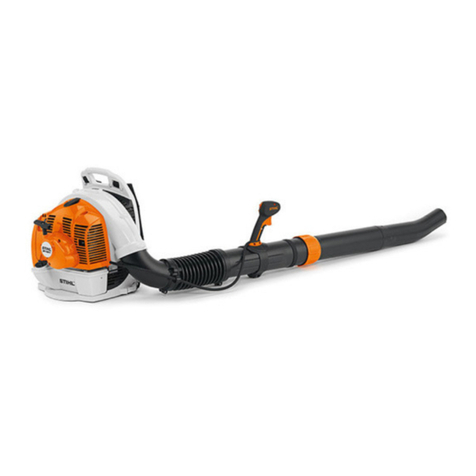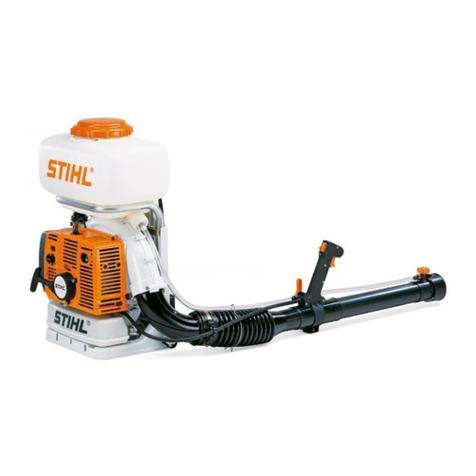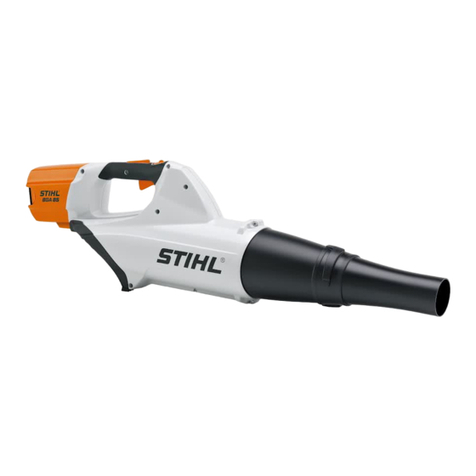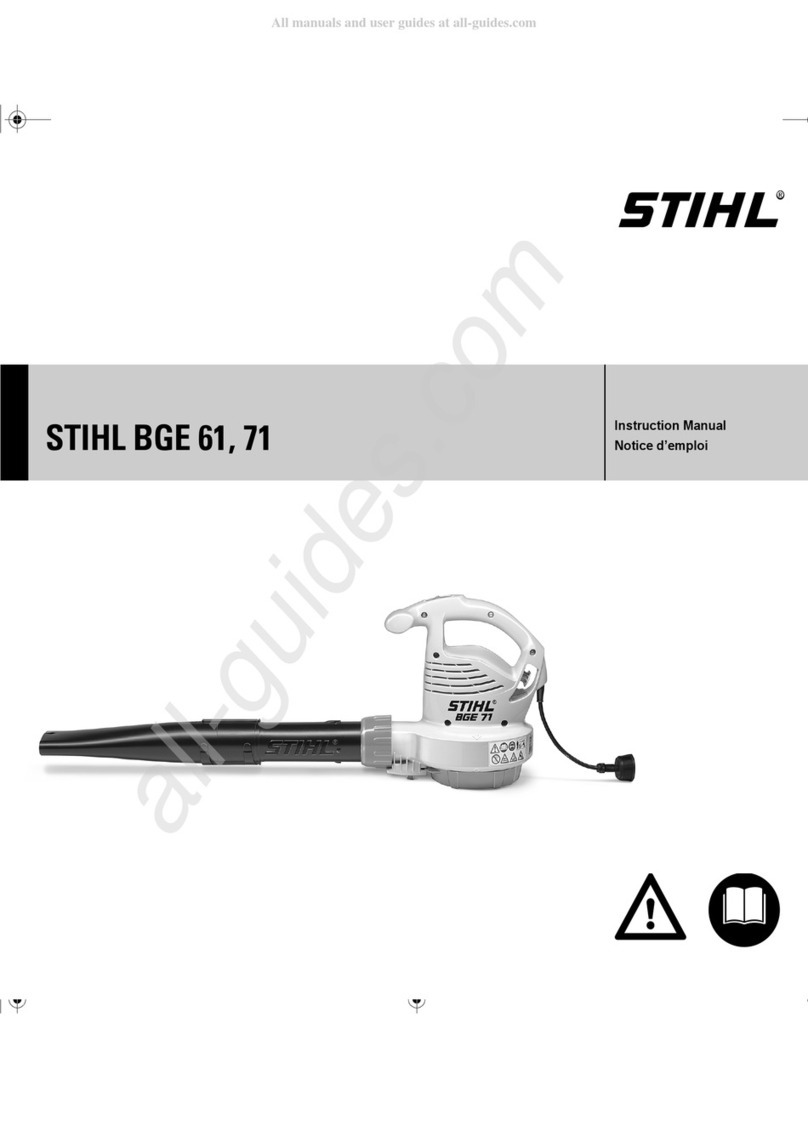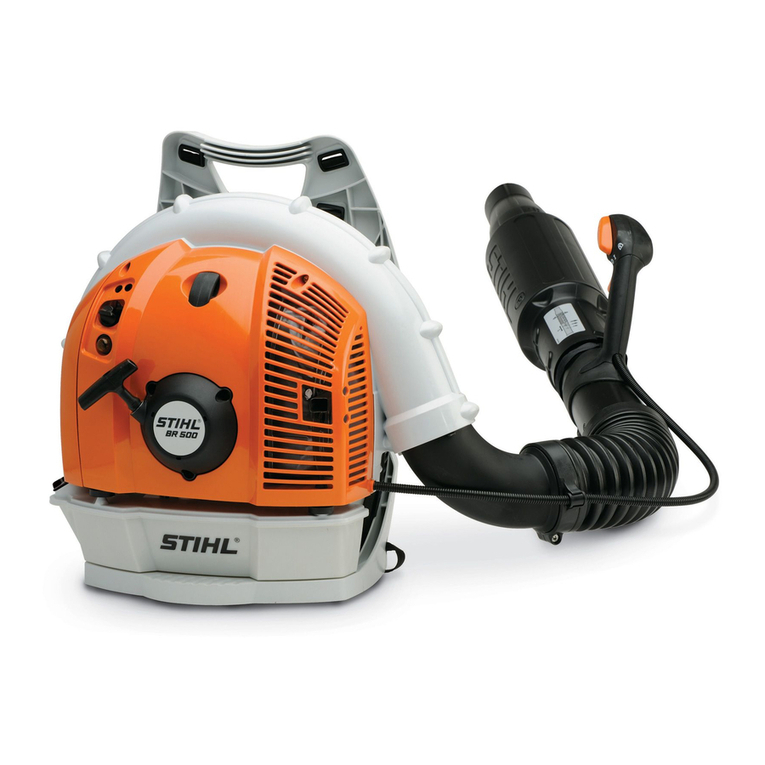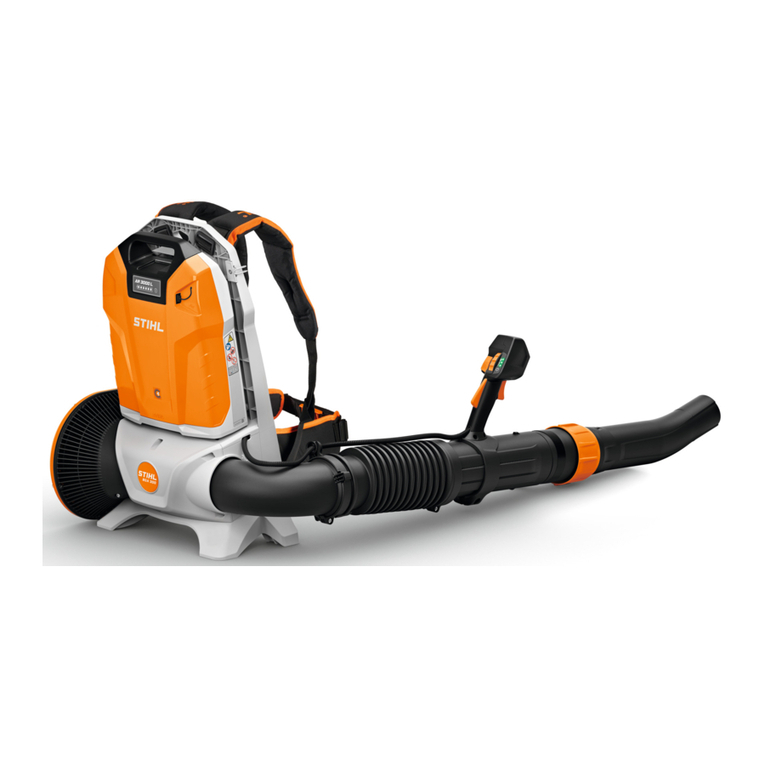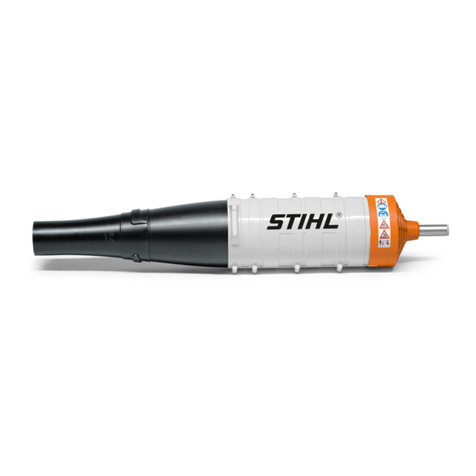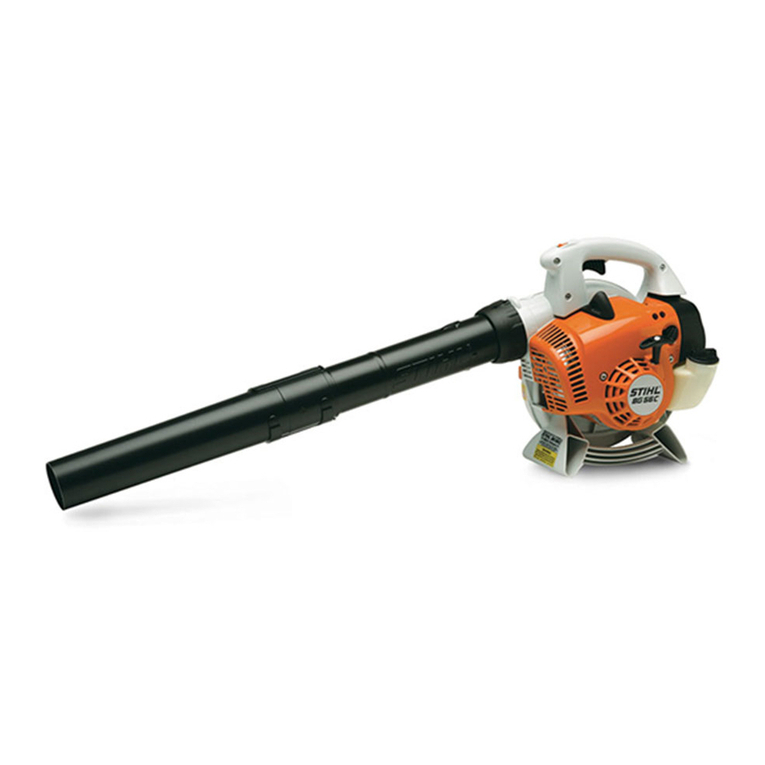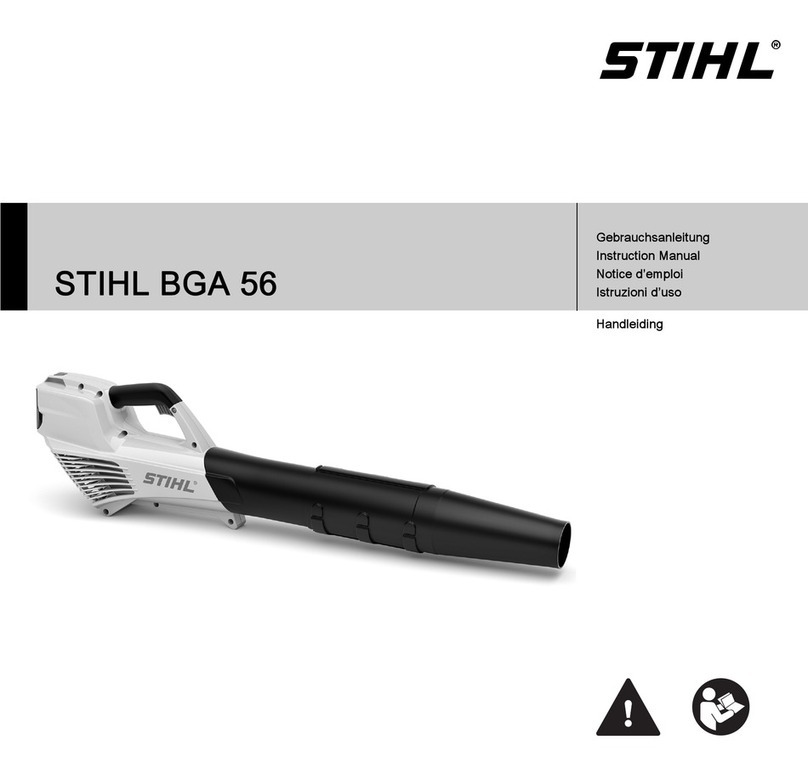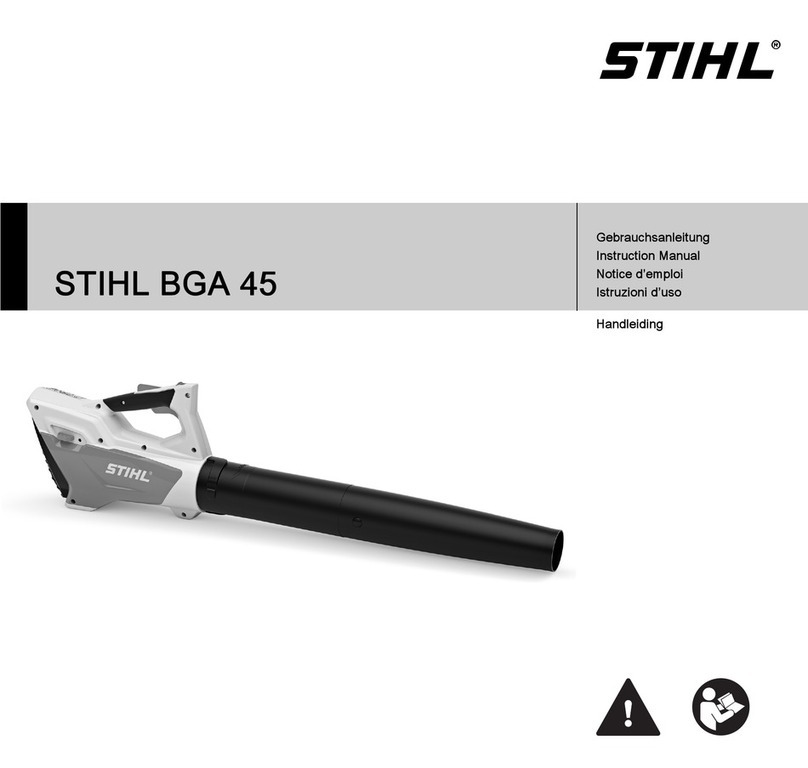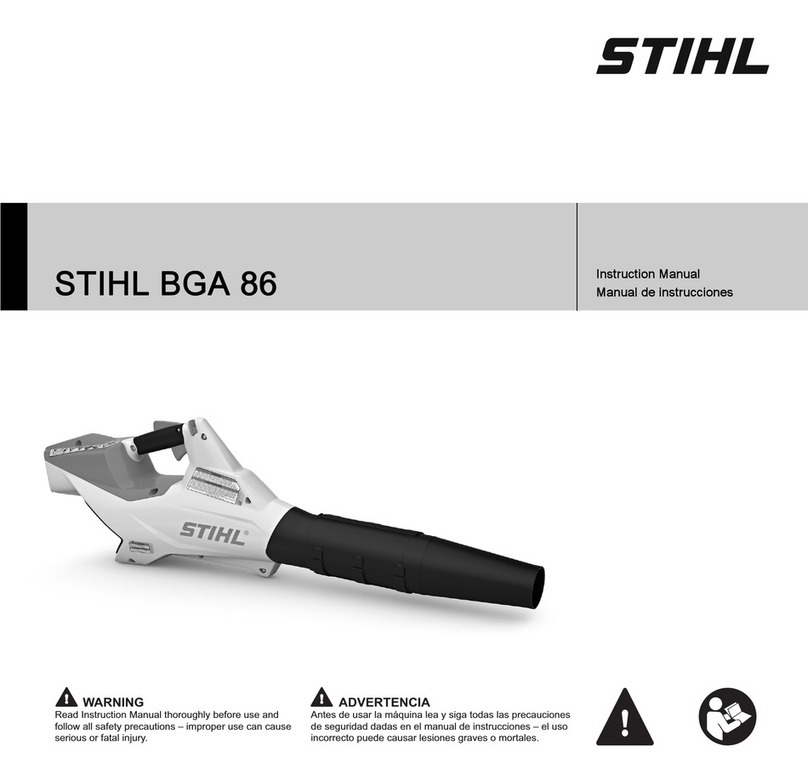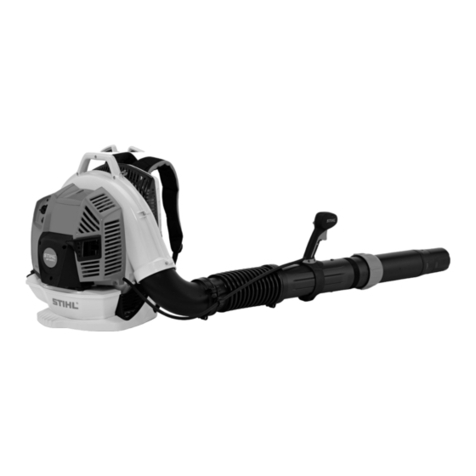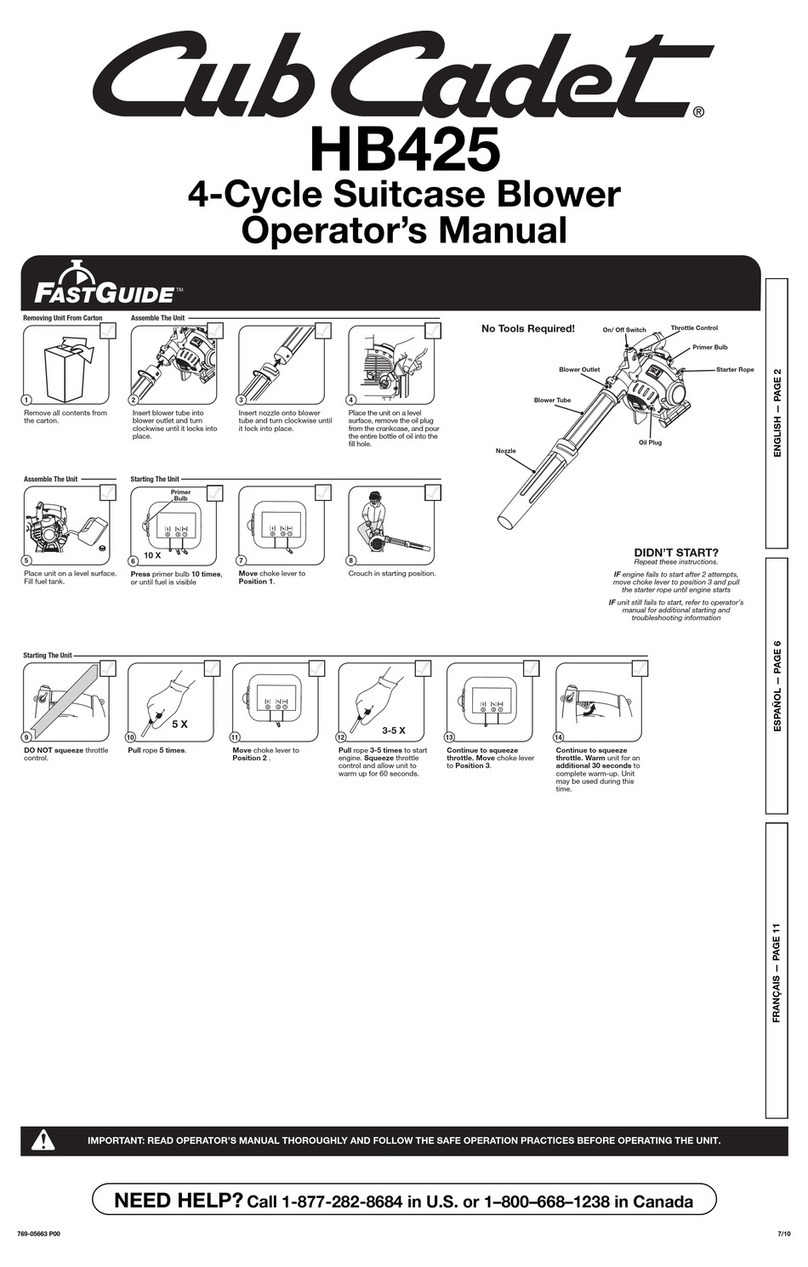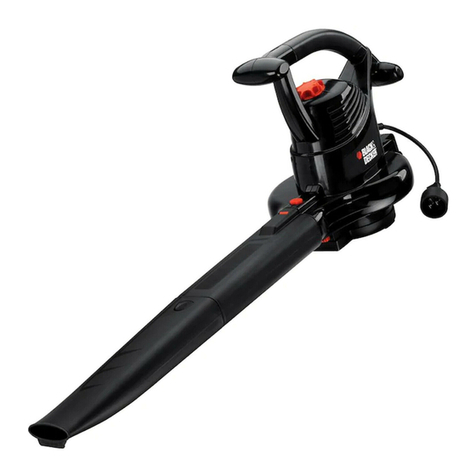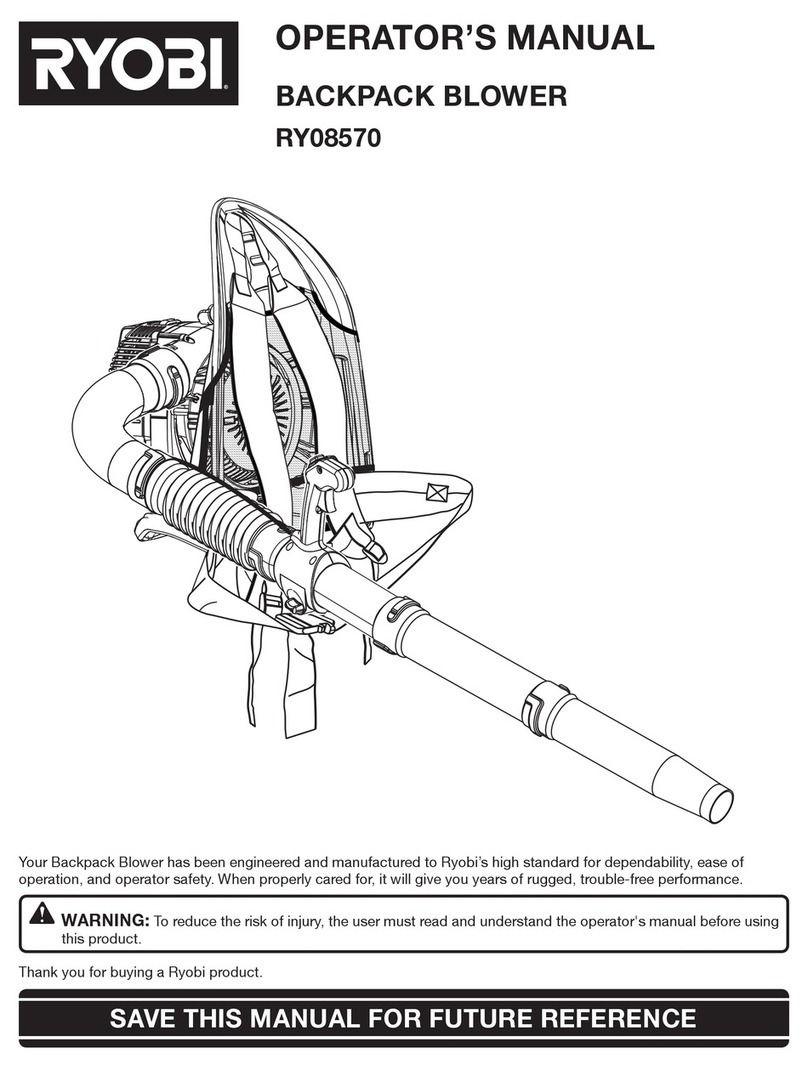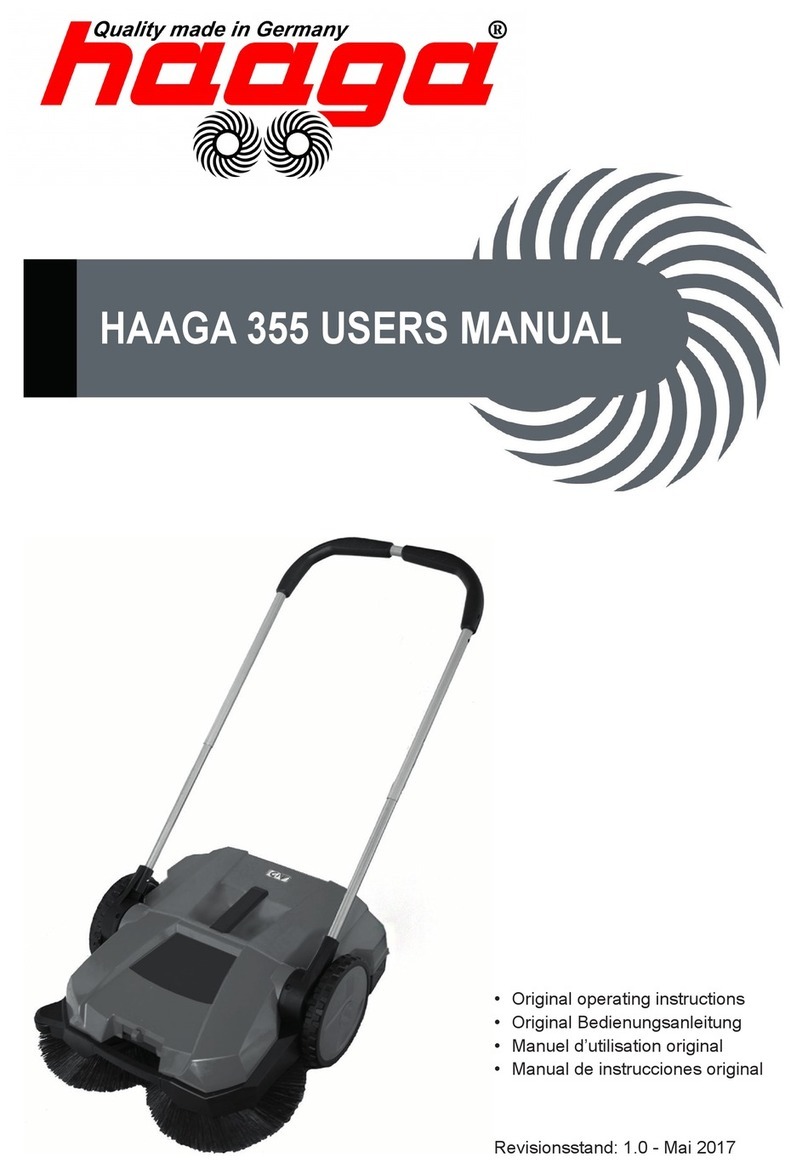
Never work on a ladder or any other insecure
support.
Be particularly alert and cautious when wearing
hearing protection because your ability to hear
warnings (shouts, alarms, etc.) is restricted.
Work calmly and carefully – in daylight conditions
and only when visibility is good. Stay alert so as
not to endanger others.
To reduce the risk of accidents, take a break in
good time to avoid tiredness or exhaustion.
Your power tool produces toxic
exhaust fumes as soon as the engine
is running. These fumes may be col‐
orless and odorless and contain
unburned hydrocarbons and benzol.
Never run the engine indoors or in
poorly ventilated locations, even if
your model is equipped with a cata‐
lytic converter.
To reduce the risk of serious or fatal injury from
breathing toxic fumes, ensure proper ventilation
when working in trenches, hollows or other con‐
fined locations.
To reduce the risk of accidents, stop work imme‐
diately in the event of nausea, headache, visual
disturbances (e.g. reduced field of vision), prob‐
lems with hearing, dizziness, deterioration in abil‐
ity to concentrate. Apart from other possibilities,
these symptoms may be caused by an exces‐
sively high concentration of exhaust gases in the
work area.
To reduce the risk of fire, do not smoke while
operating or standing near your power tool. Note
that combustible fuel vapor may escape from the
fuel system.
If dust levels are very high, always wear a suita‐
ble respirator.
Operate your power tool so that it produces a
minimum of noise and emissions – do not run the
engine unnecessarily, accelerate the engine only
when working.
After finishing work, put the unit down on a level,
non-flammable surface. To reduce the risk of fire,
do not put it down near easily combustible mate‐
rials (e.g. wood chips, bark, dry grass, fuel).
If your power tool is subjected to unusually high
loads for which it was not designed (e.g. heavy
impact or a fall), always check that it is in good
condition before continuing work – see also
"Before Starting Work". Check the fuel system in
particular for leaks and make sure the safety
devices are working properly. Do not continue
operating your power tool if it is damaged. In
case of doubt, consult your servicing dealer.
2.10 Using the Blower
The machine is carried as a backpack. Hold and
control the blower tube with your right hand on
the control handle.
Walk slowly forwards as you work – observe the
nozzle outlet at all times – do not walk back‐
wards – risk of stumbling.
Always shut off the engine before taking the
machine off your back.
2.11 Working Technique
To minimize blowing time, use a rake and broom
to loosen dirt particles before you start blowing.
–If necessary, dampen the surface to be
cleaned in order to avoid creating too much
dust.
–Do not blow particles in the direction of
bystanders, in particular in the direction of chil‐
dren, pets, open windows or freshly washed
vehicles. Take special care in such situations.
–Remove the blow-swept debris in rubbish bins
– do not blow it onto the neighbor's land.
–Operate your power tool at reasonable times
only – not early in the morning, late at night or
during midday rest periods when people could
be disturbed. Observe local rest periods.
–Operate blowers at the lowest engine speed
necessary to accomplish the task.
–Check your blower before starting work. Pay
special attention to the muffler, air intakes and
air filter.
2.12 Vibrations
Prolonged use of the power tool may result in
vibration-induced circulation problems in the
hands (whitefinger disease).
No general recommendation can be given for the
length of usage because it depends on several
factors.
2 Safety Precautions and Working Techniques English
0458-456-8321-E 5

